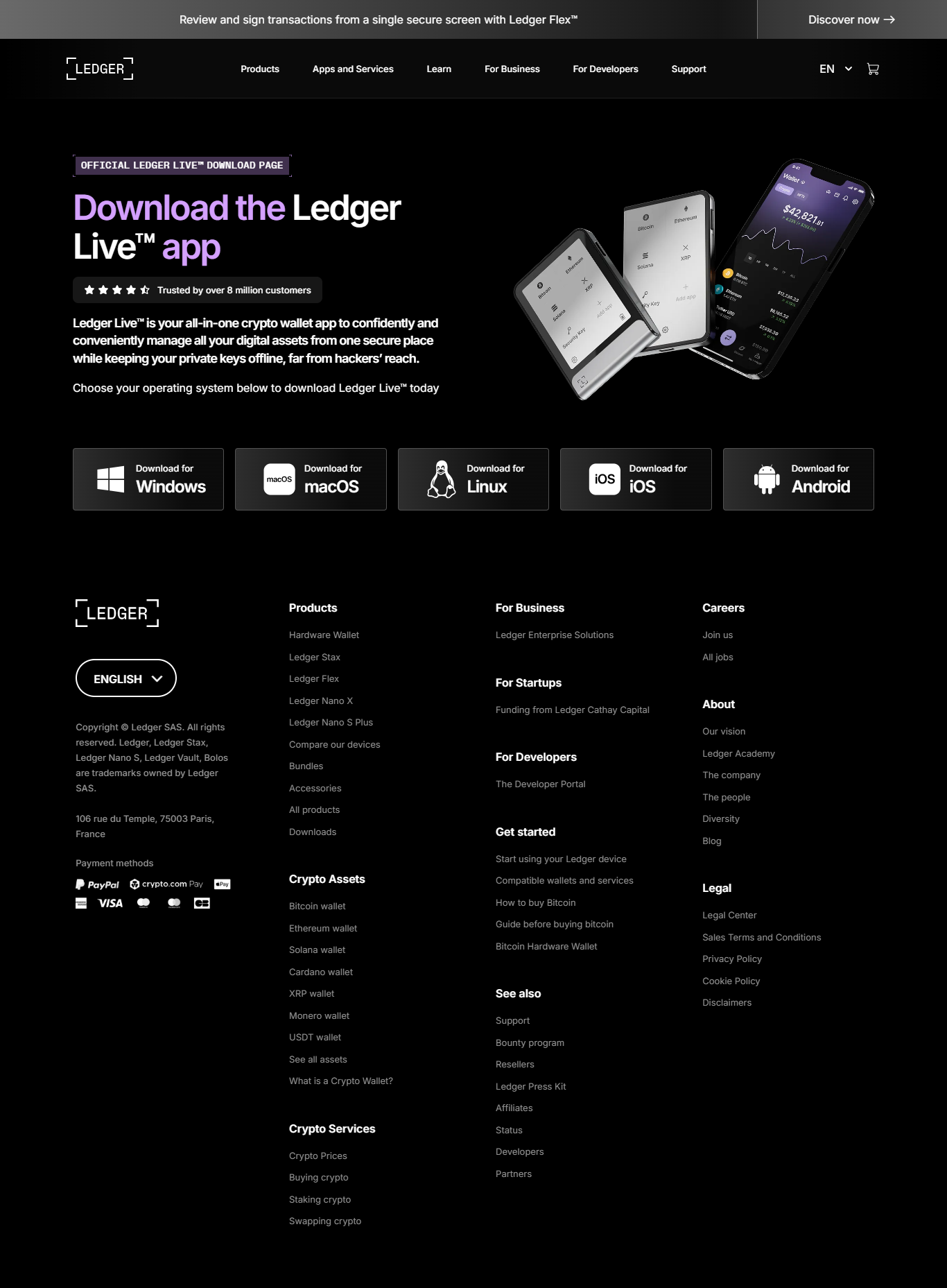Ledger Live — Start Secure. Manage Confidently.
A practical, design-forward guide to using Ledger.com/start and Ledger Live to secure your crypto — from setup to staking, DeFi access to NFT tracking. Built for beginners and intermediate users who want a clear, safe path to manage digital assets.
Why start at Ledger.com/start?
Think of Ledger.com/start as the official front door. In crypto, a wrong download or a clever phishing page can cost you everything. Using the official start page ensures Ledger Live is authentic, the firmware matches what Ledger expects, and the device handshake is verified. In short: fewer mistakes, stronger security.
A quick analogy
If crypto is your money in a digital city, Ledger Live is the secure vault manager and Ledger device is the physical key. Ledger.com/start is the verified address where you acquire the manager app and confirm the key's authenticity.
Deep dive: What Ledger Live actually does
Ledger Live is not a wallet in the sense that it stores private keys on your computer. Instead, it's a management application that communicates with a Ledger hardware wallet (the device). Key operations like signing transactions happen on the device itself. This separation — app + hardware — combines convenience with the security posture of an offline key (a hardware wallet).
Core capabilities: portfolio monitoring, send/receive, in-app swaps, staking (for supported chains), firmware updates, and an interface to third-party dApps for DeFi and NFT interactions — always with on-device confirmation for sensitive actions.
Quick Comparison: Ledger Live vs Typical Software Wallets
| Feature | Ledger Live + Device | Software Wallet |
|---|---|---|
| Private key storage | Offline, secure element on device | On device or browser; potentially exposed |
| Transaction signing | Signed on hardware, user verifies on screen | Signed on host, risk if host compromised |
| Staking support | Integrated for many chains via Ledger Live | Depends on wallet; may need extra tools |
| DeFi / dApp access | Available via third-party connectors (always confirm on device) | Direct browser integrations; convenient but riskier |
Key Terms
- Private key — the secret used to sign transactions.
- Seed phrase — 24 words that restore your wallet.
- Staking — locking assets to secure a chain and earn rewards.
- DeFi — decentralized finance protocols (lending, AMMs).
- NFT — non-fungible tokens representing unique digital items.
Practical Security Checklist
- Always start at Ledger.com/start — no search ads.
- Initialize the device in private; write the seed on paper/metal and store offline.
- Verify firmware via Ledger Live before adding accounts.
- Use small test transactions when interacting with a new dApp or address.
- Enable passphrases for extra-segmented accounts if you need higher privacy.
“The easiest way to lose crypto is to treat your seed phrase casually. Ledger Live and a hardware wallet give you a safety system — but the human step of securing the seed is where most losses happen.” — security lead, anecdotal guidance
FAQ
No — Ledger Live is designed to work with Ledger hardware. The security model depends on the private key being on the device.
No. Ledger does not store your seed phrase. You must back it up securely; losing it means losing access to funds.
Ledger Live delegates or bonds assets on your behalf to validators for supported chains. Rewards vary per chain and may be subject to lock-up periods.
Yes, when you use verified third-party connectors and always confirm transactions on-device. DeFi involves smart contract risk — use caution and check contract details.
Conclusion — Secure Habits Over Hype
Ledger Live, when paired with a Ledger hardware wallet and the safe starting point at Ledger.com/start, gives you a robust balance between convenience and security. Whether you want to hold Bitcoin long-term, stake for passive rewards, or explore DeFi and NFTs, the combination of offline keys and a trusted management app reduces your attack surface dramatically.
